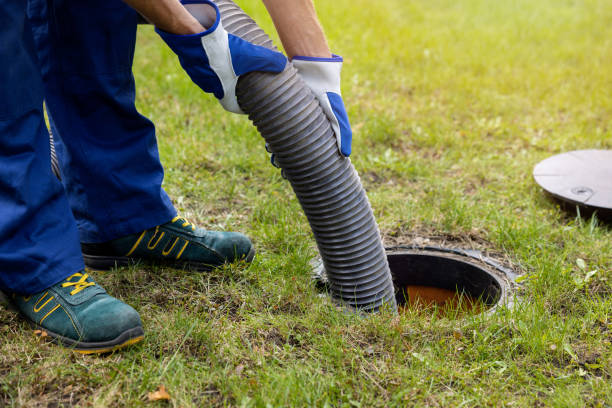Table of Contents
- Understanding Your Septic System
- Regular Inspections and Pumping
- Mindful Water Usage
- Proper Waste Disposal
- Protecting the Drainfield
- Using Septic-Safe Products
- Recognizing Warning Signs
- Conclusion
Maintaining a healthy septic system is a vital responsibility for homeowners who depend on it to treat their household wastewater. Proper care prevents expensive system failures, protects your property, and safeguards the surrounding environment. For those looking to prevent costly issues and extend the lifespan of their system, understanding the importance of regular septic tank pumping is a crucial first step.
An efficient septic system works quietly in the background, but neglect can quickly turn it into a source of stress, odors, and unexpected expenses. Whether you’ve recently purchased a home with a septic tank or want to brush up on best practices, following a consistent care routine can save you significant money and hassle over time. Proactive maintenance also helps protect both your health and local water resources from contamination.
Every septic system owner should understand how their system works, what symptoms indicate an issue, and the best practices to keep everything running smoothly. From mindful water usage to selecting the right cleaning products, a few simple strategies can preserve system health for years.
Understanding Your Septic System
Most residential septic systems consist of two main parts: a septic tank and a drainfield. Wastewater from your home flows into the tank, where heavier solids settle and form sludge. Grease and lighter materials rise to create a scum layer at the top. The clarified liquid then moves into the drainfield, where it slowly filters through the soil for natural cleaning. Regular maintenance is essential to ensure the system operates efficiently and to prevent untreated waste from contaminating groundwater or causing backups inside the house. Once you understand the basics, working with trusted septic tank inspectors and following professional advice can help maintain system reliability. Regular inspections can detect small issues early, saving money and providing peace of mind.

Regular Inspections and Pumping
The single most effective way to avoid major septic malfunctions is through routine inspections and scheduled pumping. The Environmental Protection Agency (EPA) recommends a professional inspection every 3 years and tank pumping every 3 to 5 years. However, families with higher occupancy or older systems may require more frequent service. Scheduling consistent maintenance visits removes accumulated solids, preventing blockages, tank overflows, and environmental contamination. A neglected tank can quickly become a breeding ground for health hazards and expensive emergencies.
Mindful Water Usage
Overloading your septic system with excess water can compromise its ability to treat wastewater effectively. High water use keeps solids suspended longer, increasing the risk of clogs and premature drainfield failure. To minimize stress on your system:
- Repair leaking faucets and toilets promptly.
- Install low-flow fixtures and energy-efficient appliances.
- Stagger laundry and dishwasher loads throughout the week rather than doing them all in a single day.
Simple water conservation efforts not only extend your septic system’s life but also help reduce monthly utility bills.
Proper Waste Disposal
Flushing or draining improper materials is one of the fastest ways to upset your septic system’s balance. Only human waste and toilet paper should enter your tank. Never flush items such as paper towels, baby wipes, feminine hygiene products, dental floss, or diapers. Similarly, avoid dumping cooking grease, paint thinners, medications, or harsh chemicals down the sink or toilet—these can clog plumbing, kill beneficial microbes, and damage system components. Always use a trash bin for non-biodegradable items and hazardous materials to preserve healthy system function.
Protecting the Drainfield
The drainfield is responsible for the final step in wastewater removal, filtering liquid effluent before it reaches groundwater. Safeguard this critical area by:
- Never drive or park vehicles—especially heavy ones—on or near the drainfield, as this causes soil compaction and pipe damage.
- Plant trees, shrubs, and large plants far from the drainfield to avoid invasive root systems that can puncture pipes and disrupt the soil’s filtering ability.
- Keeping gutters, sump pumps, and landscape drainage directed away from your drainfield to prevent excess water from flooding the area.
Maintaining and protecting the drainfield ensures effective filtration and prolongs the overall lifespan of your septic system.
Using Septic-Safe Products
Everyday cleaners and detergents play a significant role in supporting your septic system’s microbial environment. Harsh chemicals, bleach, and antibacterial soaps may target bacteria in your home, but those same ingredients can destroy essential bacteria inside your tank. Choose products labeled as septic-safe and biodegradable to foster healthy waste decomposition. Doing so supports efficient operation and reduces the risk of costly tank repairs down the line.
Recognizing Warning Signs
Recognizing early indicators of septic system distress can prevent small hiccups from escalating into significant damage. Warning signs include:
- Slow-draining sinks, tubs, and toilets.
- Unusual gurgling sounds in your plumbing.
- Persistent wet or soggy patches near the drainfield.
- Noticeable sewage odors inside or outside your home.
If you experience any of these symptoms, call a professional for inspection and necessary repairs. Immediate action can prevent severe system failures or potential health and environmental hazards.
Conclusion
Caring for your septic system is an ongoing commitment that pays off with reliable wastewater treatment, long-term savings, and environmental peace of mind. Routine maintenance, smart water and waste management, careful drainfield stewardship, and prompt attention to warning signs together ensure your septic system continues to serve your household dependably for years to come. Making informed, proactive choices now is the best investment you can make for your system’s future.


